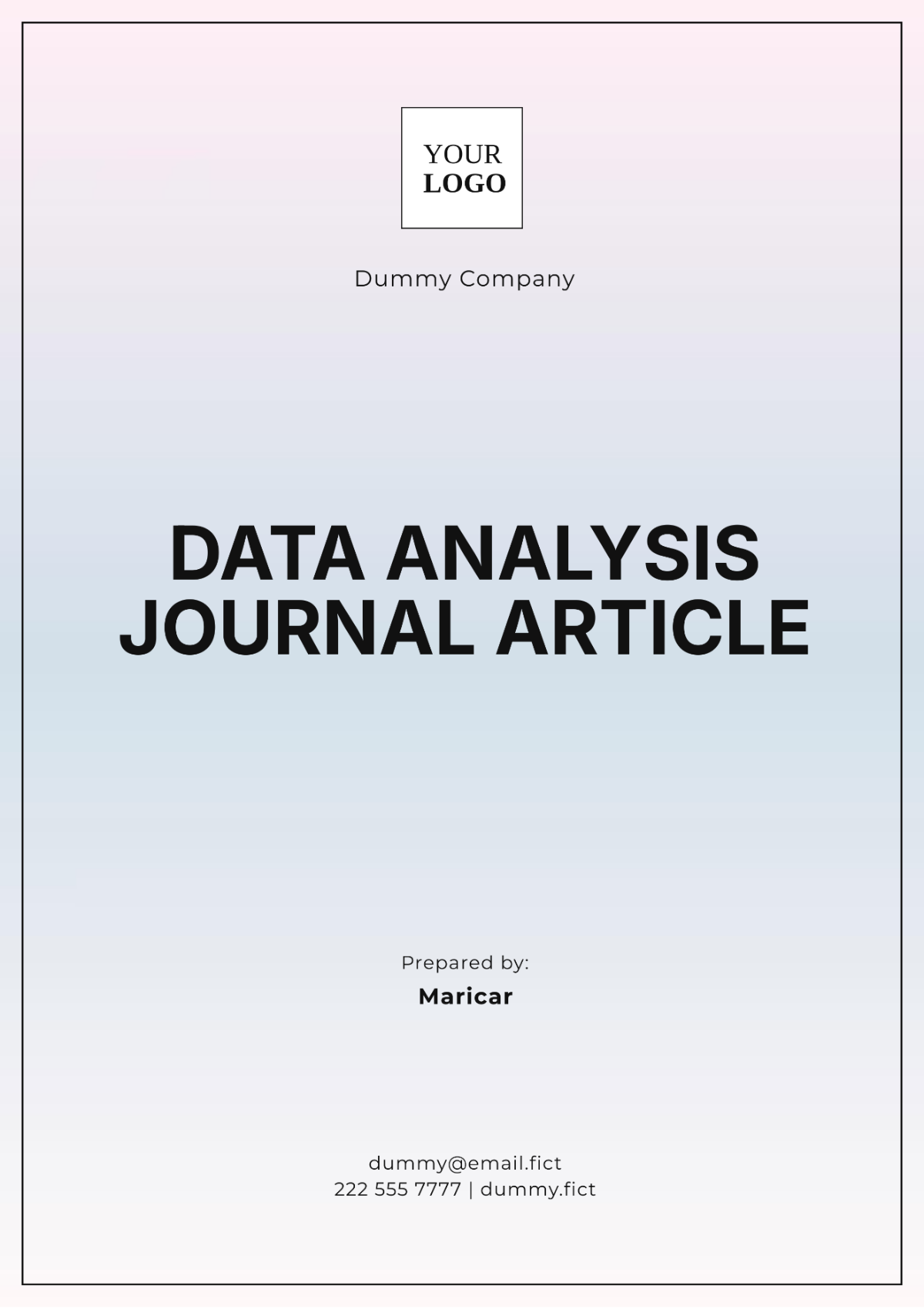Stock Analysis
Prepared By: | [YOUR NAME] |
Company: | [YOUR COMPANY NAME] |
Department: | [YOUR DEPARTMENT] |
I. Executive Summary
A. Overview
This analysis presents an in-depth assessment of the performance, trends, and potential future movements of individual stocks or entire markets. It involves analyzing various factors such as financial statements, market trends, industry conditions, and company fundamentals to make informed investment decisions.
B. Key Findings
Stock Performance: Evaluation of historical stock performance and recent trends.
Market Analysis: Assessment of broader market conditions and sentiment.
Company Fundamentals: Analysis of financial health, growth prospects, and competitive positioning.
II. Introduction
A. Purpose
To provide investors with comprehensive insights into the performance and outlook of stocks and markets, enabling informed investment decisions.
B. Scope
This analysis covers a wide range of factors influencing stock performance, including financial data, market dynamics, and industry trends.
III. Stock Performance Analysis
Historical Performance
Review of historical stock prices and trading volumes.
Identification of key price movements and significant events impacting stock performance.
Technical Analysis
Examination of stock charts and technical indicators to assess trends and potential trading opportunities.
Analysis of support and resistance levels, moving averages, and momentum indicators.
IV. Market and Industry Analysis
A. Economic Indicators
Evaluation of macroeconomic indicators such as GDP growth, inflation rates, and interest rates.
Impact analysis of economic trends on stock market performance.
B. Market Sentiment
Assessment of investor sentiment and market psychology through sentiment analysis and surveys.
Identification of market trends and potential shifts in investor behavior.
C. Sector Performance
Comparison of sector performance relative to broader market indices.
Analysis of industry-specific factors influencing stock performance.
D. Competitive Landscape
Review of key competitors and their market positioning.
Assessment of industry trends and disruptions affecting competitive dynamics.
V. Company Fundamentals
A. Financial Statements
Analysis of company financial statements including income statements, balance sheets, and cash flow statements.
Evaluation of key financial metrics such as revenue growth, profitability, and liquidity ratios.
B. Growth Prospects
Assessment of company growth prospects based on product pipeline, expansion plans, and market opportunities.
Identification of factors driving future revenue and earnings growth.
VI. Risk Analysis
A. Market Risks
Identification of macroeconomic risks such as recession, inflation, and geopolitical events.
Evaluation of market volatility and potential impact on investment portfolios.
B. Company-Specific Risks
Assessment of risks specific to individual companies such as regulatory changes, litigation, and management issues.
Analysis of risk management strategies and mitigation measures.
VII. Investment Recommendations
A. Buy, Sell, or Hold
Recommendation on whether to buy, sell, or hold the stock based on the analysis conducted.
Justification for the recommendation supported by data and insights.
B. Diversification Strategies
Suggestions for portfolio diversification to spread risk across different asset classes and sectors.
Allocation recommendations based on risk tolerance and investment objectives.
C. Long-Term Outlook
Assessment of the long-term outlook for the stock or market based on fundamental analysis and future growth prospects.
Recommendations for investors with a long-term investment horizon.
VIII. Conclusion
A. Summary
This analysis provides valuable insights to [YOUR COMPANY NAME] into the performance, trends, and potential future movements of individual stocks or entire markets. By considering various factors such as financial statements, market trends, industry conditions, and company fundamentals, investors can make informed investment decisions aligned with their financial goals.
B. Next Steps
Implementation of investment recommendations based on risk tolerance and investment objectives.
Continuous monitoring of stock performance and market trends to adapt investment strategies as needed.
Regular review and adjustment of investment portfolios to optimize returns and manage risk.

















































